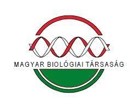A kereklevelű harmatfű (Drosera rotundifolia L.) szaporodásbiológiai vizsgálata, különös tekintettel az ex situ természetvédelmi módszerekre
Absztrakt
A hazánkban jégkorszaki reliktum kereklevelű harmatfű (Drosera rotundifolia L.) állományai jelentősen megfogyatkoztak az utóbbi évtizedekben, a túlélő populációk megóvásaegyre nagyobb nehézséget jelent a természetvédelem számára. Kutatásunk célja a rovaremésztő növény szaporodásbiológiájának megismerése és a faj élőhelyen kívüli, ex situ természetvédelmi célú megőrzése az Őrségi Nemzeti Parkkal együttműködve. Egy olyan ex situ módszertani ajánlást kívánunk kidolgozni, mellyel a lehető legkisebb ráfordítással, a legeredményesebben szaporítható magról a faj mesterséges környezetben, szükség esetén az adott élőhelyre való visszatelepítéssel. Vizsgálatainkat összesen 11 400 db magon végeztük: az őrségi természetes élőhelyi (Fekete-tó) gyűjtésű magok mellett saját nevelésű, kertészeti állományból (Hollandia) származó növények magjait is bevontuk. Digitális fotóinkon elvégzett pixelszám-alapú méret meghatározással tanulmányoztuk a magok morfológiai jellemzőit. Üvegházi kísérletben teszteltük a csírázás fényigényét, a vernalizáció hatását a csírázásra, különböző aljzatokon a kelés sikerét, továbbá a levéldugványról történő vegetatív szaporítás hatékonyságát. A mag morfológiájára vonatkozó eredményeink mindkét magminta esetében megegyeztek a szakirodalmi adatokkal: a keskeny ellipszoid alakú magok mérete 1,46 mm × 0,21 mm, és a csíkozott maghéj nem tapad szorosan az embrióhoz. A kis méretű (0,20 mm × 0,10 mm) embrió fakó sötétbarna színű, sima felszínű, ellipszoid alakú, és annak felszínén is finom csíkozottság van. Kimutattuk, hogy az eredményes csíráztatás feltétele a megfelelő időtartamú vernalizáció és a magok fényen való hajtatása. A legjobb csírázási eredményt a magok 5 hétig tartó, 0–3 °C-on végzett hidegkezelésével, majd a magvetés fényen történő inkubálásával (25–30 °C-on) értük el. Az aljzatpreferencia-vizsgálatok azt mutatták, hogy a tesztelt 9-féle csíráztatási aljzat közül a kereklevelű harmatfű magjai élő tőzegmohában (Sphagnum spp.) csíráznak a legeredményesebben. A növény levéldugványról történő vegetatív szaporítását a magról történő felszaporítás mellett különösen eredményesnek találtuk (közelítően 1,5-szeres utódszám). Levéldugványról rövidebb idő alatt és nagyobb tömegben szaporítható mesterséges környezetben a faj, ellenben a vegetatívan létrehozott egyedek visszatelepítését csak vészmegoldásként javasoljuk az alacsony genetikai diverzitás miatt.
Hivatkozások
Andersson L., Milberg P. 1998: Variation in seed dormancy among mother plants, populations and years of seed collection. Seed Science Research 8: 29–38. https://doi.org/10.1017/s0960258500003883
Andrus R. E. 1986: Some aspects of Sphagnum ecology. Canadian Journal of Botany 64: 416–426. https://doi.org/10.1139/b86-057
Baranyai B., Joosten H. 2016: Biology, ecology, use, conservation and cultivation of roundleaved sundew (Drosera rotundifolia L.): a review. Mires and Peat 18: 1–28.
Bartha D. (szerk.) 2000: A tervezett Őrség–Rába Nemzeti Parkot megalapozó botanikai-zoológiai kutatások I–X. Nyugat-Magyarországi Egyetem, Sopron, 767 pp. + 72 térkép.
Bartha D. (szerk.) 2012: Természetvédelmi növénytan. Mezőgazda Kiadó, Budapest, pp. 273–278.
Bartha D., Király G., Schmidt D., Tiborcz V., Barina Z., Csiky J., Jakab G., Lesku B., Schmotzer A., Vidéki R., Vojtkó A., Zólyomi Sz. 2015: Magyarország edényes növényfajainak elterjedési atlasza. Nyugat-magyarországi Egyetem Kiadó, Sopron, 329 pp.
Baskin C. C., Baskin J. M. 1998: Seeds – ecology, biogeography, and evolution of dormancy and germination. Academic Press, San Diego, 666 pp.
Baskin C., Milberg P., Andersson L., Baskin J. M. 2001: Seed dormancy-breaking and germination requirements of Drosera anglica, an insectivorous species of the Northern Hemisphere. Acta Oecologica 22: 1-8. https://doi.org/10.1016/s1146-609x(00)01093-6
Bojnansky V., Fargasová A. 2007: Atlas of seeds and fruits of Central and East-European flora, the Carpathian Mountains Region. Springer, 1046 pp.; pp. 243–244.
Campbell D. R., Rochefort L. 2003: Germination and seedling growth of bog plants in relation to the recolonization of milled peatlands. Plant Ecology 169: 71–84. https://doi.org/10.1023/a:1026258114901
Chung M. Y., López-Pujol J., Chung M. G. 2013: Population history of the two carnivorous plants Drosera peltata var. nipponica and Drosera rotundifolia (Droseraceae) in Korea. American Journal of Botany 100(11): 2231–2239. https://doi.org/10.3732/ajb.1200486
Crowder A. A., Pearson M. C., Grubbs P. J., Langlois P. H. 1990: Biological flora of the British Isles. No. 167. Drosera L. Journal of Ecology 78: 233–267.
Czenthe B. 1985: A keleméri Mohostavak cönológia viszonyai. Botanikai Közlemények 72: 89–122.
D’amato P. 1998: The Savage Garden: cultivating carnivorous plants. Ten Speed Press, Berkeley, 314 pp.
Darwin C. 1875: Insectivorous plants. John Murray, London, 450 pp.
Darwin F. 1878: Experiments on the nutrition of Drosera rotundifolia. Journal of the Linnean Society, Botany 17: 17–32.
Engelhardt T. L. 1998: Pollination ecology of the round-leaved sundew, Drosera rotundifolia L. (Droseraceae), in Sequoia National Park, California. PhD dissertation, California State University Fullerton, CA., 124 pp.
Farkas S. 1999: Magyarország védett növényei. Mezőgazda Kiadó, Budapest, 416 pp.
Galambosi B., Galambosi Zs., Repcák M. 2000: Growth, yield and secondary metabolite production of Drosera species cultivated in peat beds in Finland. Suo 51: 47–57.
Galambosi B. 2002: Elaboration of field growing techniques of Drosera species. Drogenreport 15(28): 56–58.
Galántai M., Kereszty Z. 1994: A fajok védelme termőhelyükön kívül. A Kertészeti és Élelmiszeripari Egyetem Közleményei 54: 26–28.
Isépy I., Mihalik E., Orlóci L., Papp L., Radvánszky A., Zsigmond V. 2013: Ex-situ növénymegőrzés. Gyűjteményes kertek a növényvilág megőrzéséért. MABOSZ, Budapest, pp. 7–13.
Labat Jean-Jacques 2003: Fleischfressende Pflanzen Auswählen und Pflegen. (Selection and maintenance of carnivorous plants). Ulmer, Stuttgart, 96 pp. (in German).
Lloyd F. E. 1942: The carnivorous plants. Chronica Botanica, Waltham, MA., 352 pp.
Moore P. D. 2002: The future of cool temperate bogs. Environmental Conservation 29: 3–20.
Murza G. L., Davis a. R. 2003: Comparative flower structure of three species of sundew (Drosera anglica, Drosera linearis, and Drosera rotundifolia) in relation to breeding system. Canadian Journal of Botany 81: 1129–1142. https://doi.org/10.1139/b03-104
Nordbakken J. F., Rydgren K., Oakland R. H. 2004: Demography and population dynamics of Drosera anglica and D. rotundifolia. Journal of Ecology 92: 110–121. https://doi.org/10.1046/j.0022-0477.2004.00839.x
Sagan K., Pogorzelec M. 2011: Attempt to determine the optimal conditions for culture of endangered plants species of the genus Drosera, in terms of their ex situ conservation. Teka Komisji Ochrony i Kształtowania Środowiska 8: 145–150.
Schulze W., Schulze E. D. 1990: Insect capture and growth of the insectivorous Drosera rotundifolia L. Oecologia 82: 427–429. https://doi.org/10.1007/bf00317494
Simon T. 2000: A magyarországi edényes flóra határozója. Harasztok – virágos növények. Nemzeti Tankönyvkiadó, Budapest, 976 pp.
Sulyok J., Ilonczai Z. 2002: Lápok. Nemzeti Ökológiai Hálózat, 3. füzet, Környezetvédelmi Minisztérium Természetvédelmi Hivatala, Budapest, 28 pp.
Svensson B. M. 1995: Competition between Sphagnum fuscum and Drosera rotundifolia: a case of ecosystem engineering. Oikos 74: 205–212. https://doi.org/10.2307/3545649
Swales D. E. 1975: An unusual habitat for Drosera rotundifolia L., its over-wintering state, and vegetative reproduction. The Canadian Field-Naturalist 89: 143–147.
Szépligeti M. 2011: Megőrzési tervek az Őrségi Nemzeti Park Igazgatóság területén. Prioritás: Kereklevelű harmatfű (Drosera rotundifolia L.). Kézirat, Őrségi Nemzeti Park Igazgatóság, Őriszentpéter, 10 pp.
Szépligeti M. 2014: Feljegyzés a kereklevelű harmatfű (Drosera rotundifolia) érdekében végzett fajvédelmi tevékenységről. Kézirat, Őrségi Nemzeti Park Igazgatóság, 5 pp.
Szépligeti M. 2015: Feljegyzés a kereklevelű harmatfű (Drosera rotundifolia) érdekében végzett fajvédelmi tevékenységről. Kézirat, Őrségi Nemzeti Park Igazgatóság, 5 pp.
Vojnic-Zelic D. 2017: A kereklevelű harmatfű gyakorlati természetvédelme az Őrségi Nemzeti Parkban. Szakdolgozat, Soproni Egyetem, Erdőmérnöki Kar, Növénytani és Természetvédelmi Intézet, 54 pp.
Weilbrenner I. 1974: Vegetative Vermehrung und Wuchsstoffhaushalt bei dem Rundblättrigen
Sonnentau (Drosera rotundifolia) (Vegetative propagation and growth budget in roundleaved sundew (Drosera rotundifolia)). Mitteilungen der Pollichia 21: 46–67. (in German).
Wolf E., Gage E., Cooper D. J. 2006: Drosera rotundifolia L. (roundleaf sundew): A technical conservation assessment. Prepared for the USDA Forest Service, Rocky Mountain Region,
Species Conservation Project, 57 pp. Available: http:// fsweb.r2.fs.fed.us/rr/scp/plants/dicots/droserarotundifolia.pdf [2018.09.06.]


















